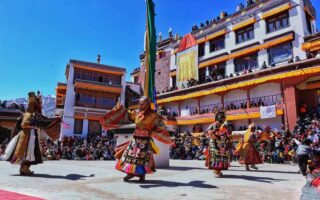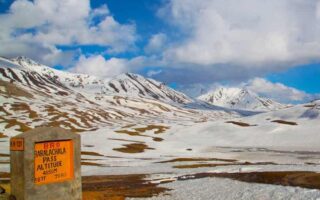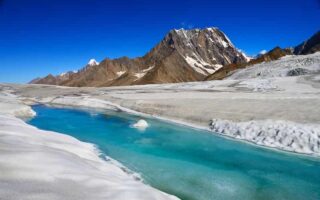Set in the backdrop of the magnificent Himalayas, stands Ladakh, the mystic land of passes, rugged contour and serene beauty. Several monasteries and natural terrains are the essence of Ladakh beauty. The warm nature of the native people of Ladakh is one more significant reason why tourists often revisit this state. The natural terrains in the valleys of Ladakh are favored by adventure lovers for varied opportunities of trekking and safari. While trekking along the passes, tourists witness Buddhists monasteries, which are still in a good state of preservations. The architecture and site of constructions of the monasteries evoke awe as they are tactfully placed within the slopes of mountain.
Phugtal monastery or Phugtal Gompa is one such wondrous and stately edifice that will surely insist trekkers to halt by its imposing looks. Hemis is a significant place for Buddhist culture in Ladakh. The Hemis Gompa (Monastery) and Hemis festival hold a special importance in defining the Buddhist philosophy in Ladakh. Tourists find great interest in viewing the giant Thangka at Hemis Gompa.
The monasteries of Chemery, Phiyang, Thikse, Likir and Spituk are of equal pageantry and importance and draws attention of tourists across the world.
Monasteries of Ladakh
In Ladakh, you will find more than a few hundred monasteries (Gompas), all located in the remote edges of the mountainous terrain. Mostly, these Buddhist Gompas or monasteries are accompanied by Stupas, the meditation center for the Buddhist monks and nuns.
Below is an account of the notable Monasteries and Stupas of the holy district of Ladakh.
Here’s a brief account of some of the notable Monasteries (Gompas) of Ladakh:
Hemis Monastery
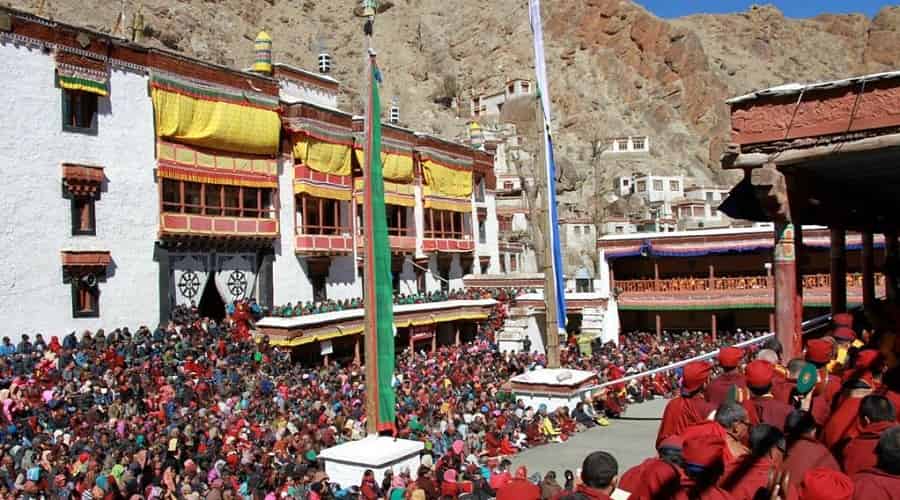
Been rightly termed as one of the seven wonders of India, the Hemis Gompa is believed to have been constructed well back in the 11th century,. However, it was renovated once more sometime during the 17th century. It is placed at a distance of 45 kms from the capital city Leh, on the western shores of Indus River. This Buddhist Gompa is considered the richest and biggest among all the Monasteries of Ladakh. This Gompa is considered to be the home of largest number of monks.
Another reason why the Hemis Gompa is famous for is because of the Hemis festival that is organized over here every year during the month of July. It is a two day long festival which invites a lot of tourists to the place during this time. One can get a clear idea of the wealth that is there in the monastery from the numerous embellishments of gold, silver and other precious metals that are on show particularly during this time of the year.
Namgyal Tsemo Monastery
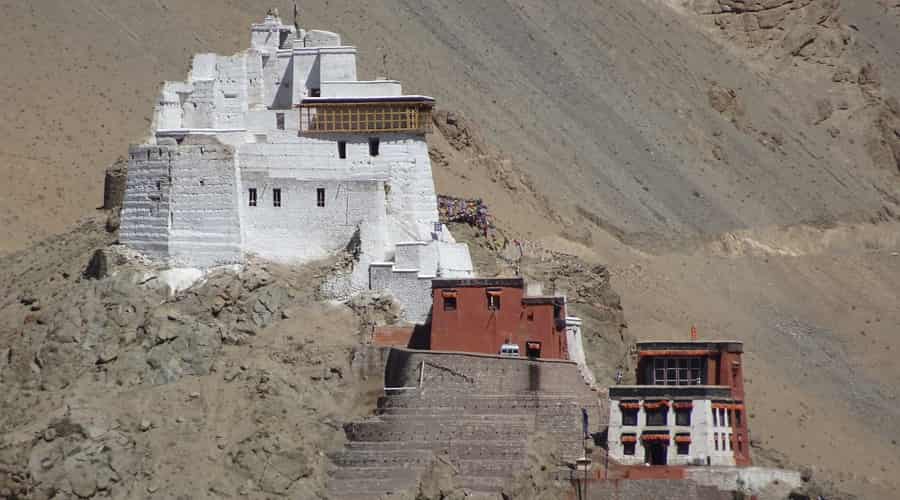
Constructed way back in 1430, this Gompa got its name from its founder king Tashi Namgyal, who had built it atop his palace. The most notable attraction of this ancient Buddhist monastery is a three storied structure of Lord Buddha. The laymen get a chance to have glimpse of Lord Buddha’s statue during daytime and also at the time of daybreak and dusk when the monks come over there to perform the routine prayer. The Namgyal Tsemo Gompa is also famous for its large display of old manuscripts and fresco art.
Shey Gompa
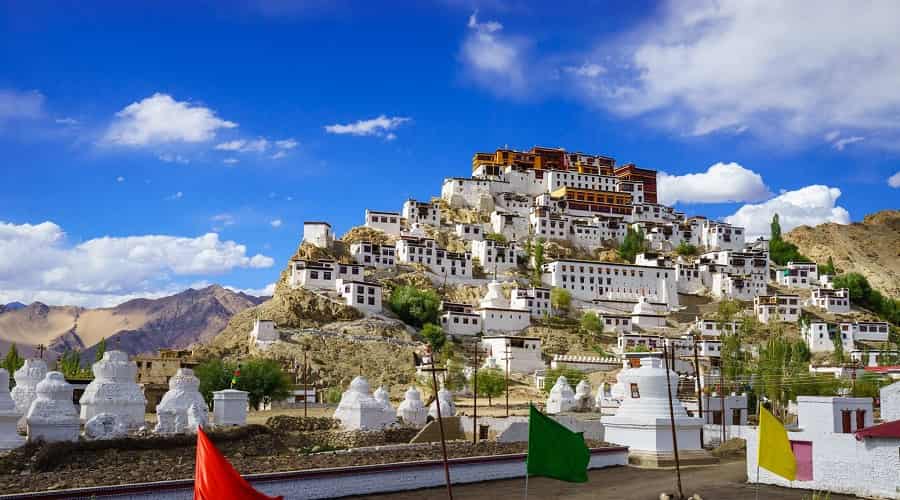
The Shey Gompa was built atop the Shey palace (15 Kms to the South of Leh, the capital city of Ladakh) was built in mid seventeenth century. The picturesque location of the monastery and also the Shey palace invites a lot of traveller over here. A clear view of the Himalayan range can be obtained from the south and west of the fortress. A seated structure of Lord Buddha (Shakyamuni Buddha) made of copper and adorned with gold , is what makes this Gompa all the more special.
The structure is 12 meters tall and placed in the second story of the old monastery. For the pilgrims a good time to visit the Shey Gompa is around the month of July, when they celebrate the “Shey Doo Lhoo” festival to register the start of the sowing season. Another festival that dots the Shey Gompa is the “Shey Ropla”, the festival that registers the start of harvesting season.
Thiksey Monastery
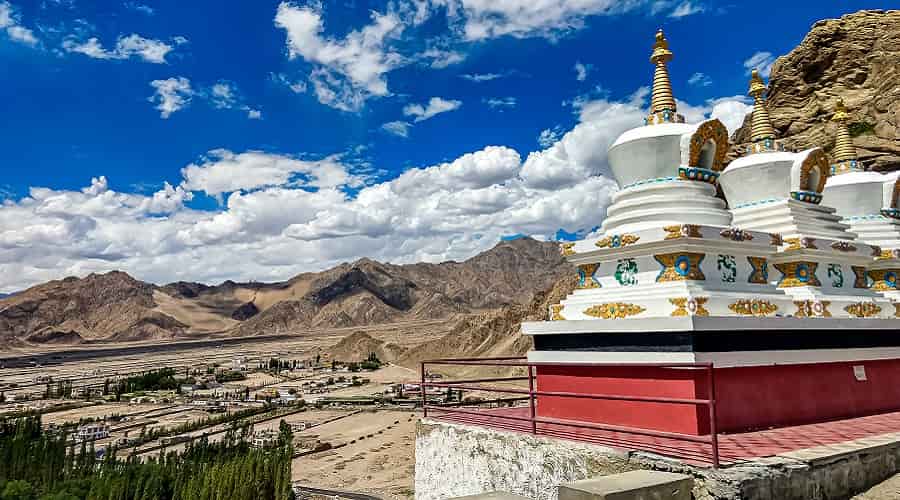
One of the most illustrious Gompas of Ladakh is the Thiksey Gompa. This famous monastery belongs to the Gelugpa orders and is located 19kms to the east of Leh. The Gompa hosts the largest Buddha statue of the holy land, 49 feet tall. There is a museum over here inside which you will get to see lot of Tantric relics and the symbolic 10 weapons which is believed to fight the evil forces. The Thiksey Gompa is also noted for the famous Gustor festival which is hosted over here every year from 17th day to the 19th day of the 10th month of Tibetan lunar calendar. One important attraction during this time is the mask dance which is considered holy among the Buddhists.
Stongdey Monastery
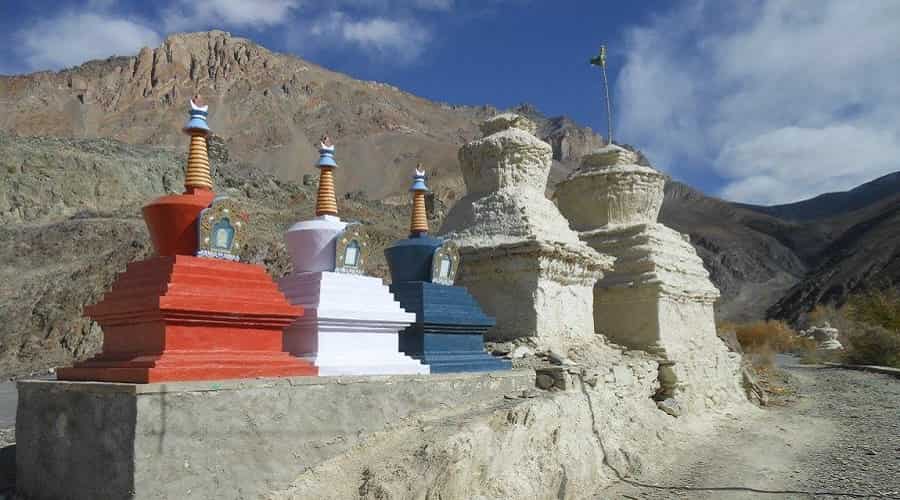
One of the oldest monasteries of Ladakh, the Stongdey Gompa, serves as the home of almost 60 monks. Though earlier it is believed to have been the home of nearly 400 monks. Well back in 1050 AD, this holy place was set up by Lama Lhodak Marpa Choski Lodos and belongs to the Tsongkhapa order. Like the Thiksey Gompa, Gustor festival is an important attraction of the Stongdey Gompa as well.
Apart from these, there are numerous other Gompas in Ladakh, the most notables being the Bardan Gompa, Diskit Gompa, Lamayuru Gompa, Alchi Gompa etc.
Stupas of Ladakh
Stupa – One of the most notable characteristic of the mountain desert of Ladakh. Most often than not the Gompas are coupled with Stupas which are usually the meditation room for the Buddhist Monks and according to the Buddhist culture the Stupas lead to the route to refinement. Ladakh hosts a variety of Stupas of various sizes.
Shanti Stupa
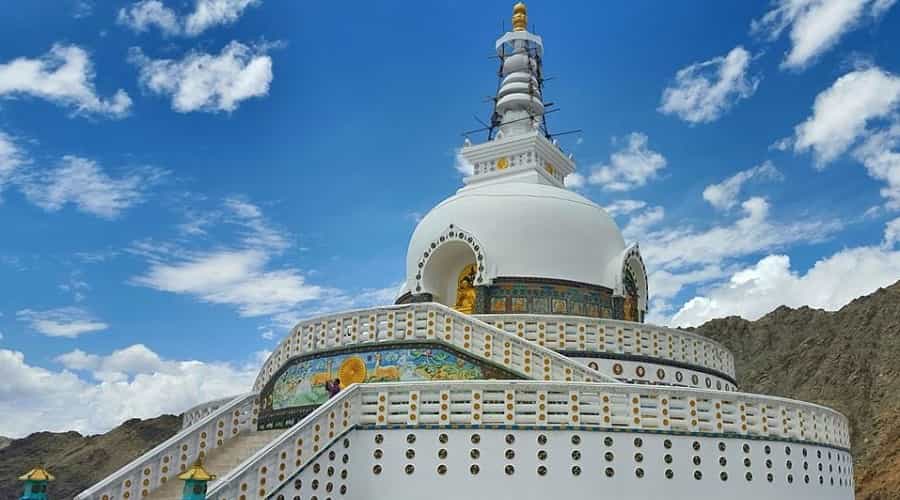
The most famous of all the Stupas of Ladakh is the Shanti Stupa, founded in 1991 by Japanese Buddhist monk, Bhikshu Gyomyo Nakamura. This famous tourist attraction of the place, is a dome shaped structure located at Chanspa of Leh district. One gets a beautiful glance of the picturesque land from atop the Stupa. It is located 5 Kms away from the city of Leh. A view of the Shanti Stupa during sunrise or sunset is considered most extraordinary.
Votive Stupas
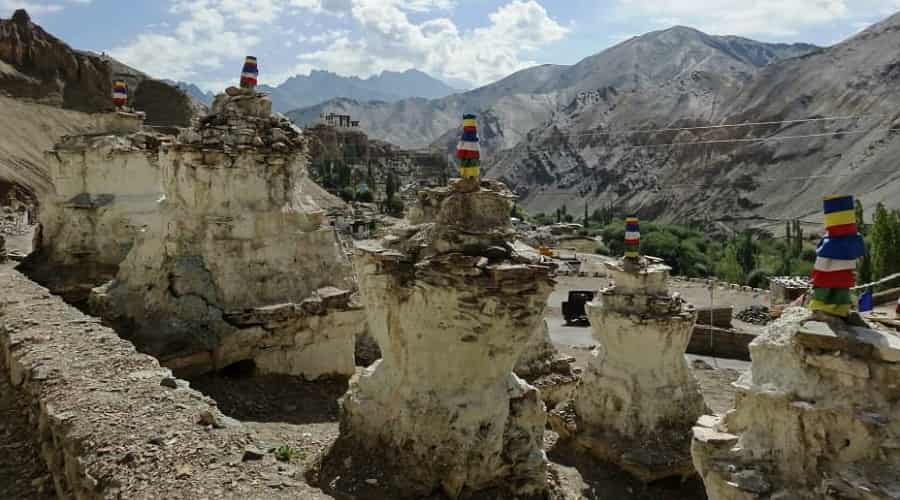
The votive Stupas are not exactly the typical Stupas notable for their theological importance but these are miniature structures built all over the mountainous terrain of Ladakh. These structures are observed by the locales as holy places from where they gain religious benefits. As a part of their offering to the deity, the local people of the place keep prayer bowls or wheels or the holy texts at these Stupas.
Needless to say, all these Stupas and Gompas add an added essence to the otherwise desolated landscape.
